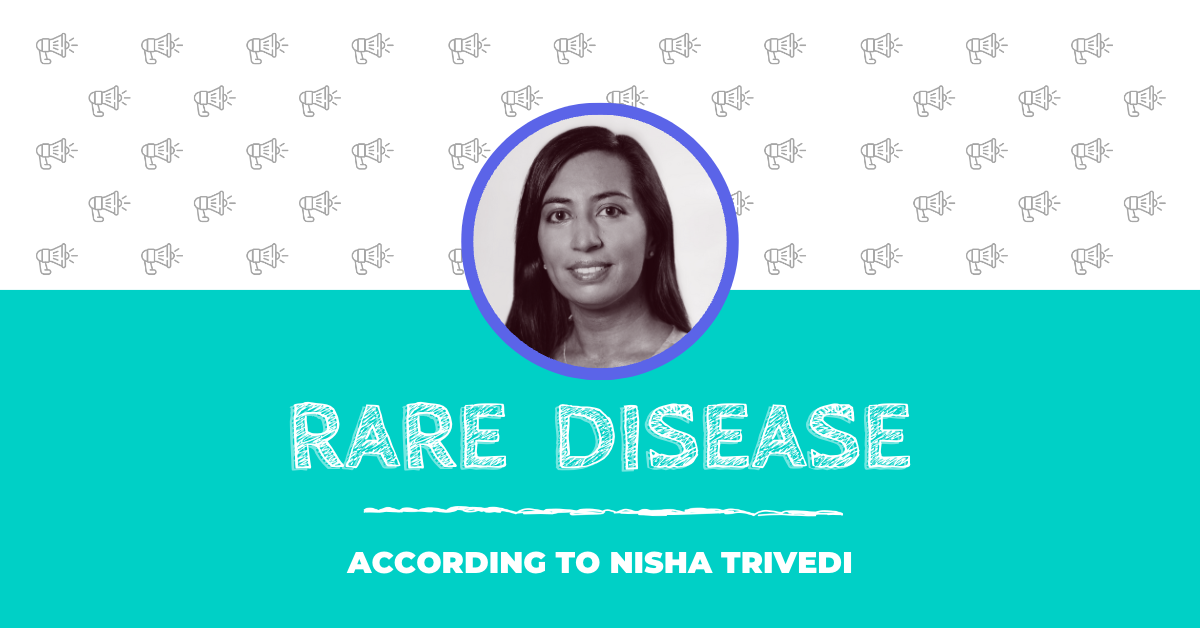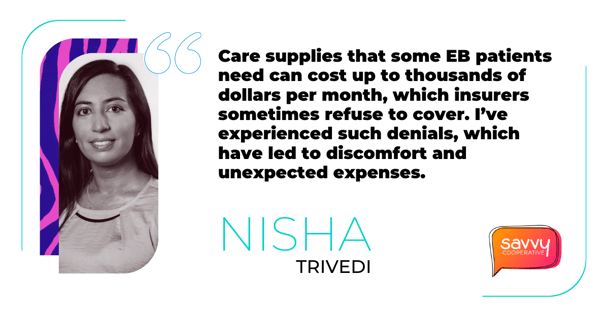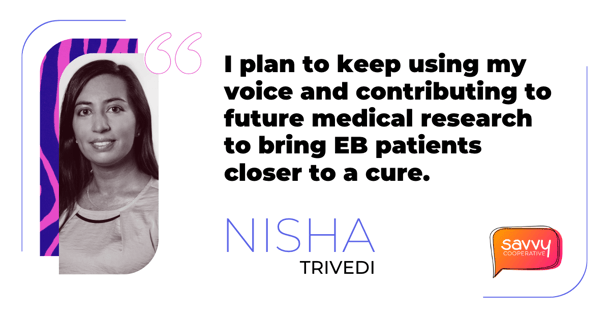
I was born with Epidermolysis Bullosa (EB), a rare genetic disorder characterized by very fragile skin—a key protein that binds the layers of skin together is missing.
Daily challenges include painful blisters at the slightest friction, wounds, scarring, and constant itching. While my symptoms have improved somewhat since childhood, some days are easier than others—and, I always have to be careful about my choice of clothing, shoes, and activity. I’m one of the luckier ones; I have a mild form of EB known as EB Simplex. Those suffering from EB’s most severe forms face much more: extensive sores that necessitate head-to-toe bandages, esophageal issues, the inability to use their hands or feet, and dangerous (sometimes fatal) infections.
Growing Up With Epidermolysis Bullosa (EB)
Growing up, I faced a lot of challenges: blisters, painful wounds from even slight friction, scarring, and constant itching. I dreaded bath time and the pain I’d experience from the application of bandages and draining of blisters. I remember how much I wished to be able to throw on clothes immediately after showering, just like everyone else I knew.
Support From My Parents
To their credit, my parents didn’t raise me in a bubble. They wanted my life to be as normal and happy as possible. My dad would distract me during dressing changes by reading books aloud (and after he finished the books, he read the back of lotion bottles). To this day, I’m a voracious reader.
We took many family vacations, and I discovered that sun and water are great for my skin. My parents and brother taught me to play tennis at age 7 or 8, and later I even joined my high school team. Fun fact: I was the only girl on it!
The first time I went skiing with my best friend, the boots caused blisters on my shins, so my mom created wraparound padding with foam gauze and Velcro—it worked like a charm.
Meet Rare Disease Advocate Nisha Trivedi (56 seconds)
Focusing on Personal Growth
Aside from the physical discomfort of having EB, I endured questions about my appearance, which made me intensely uncomfortable. As my condition became somewhat less visible over the years, I kept it hidden and stayed silent about it to avoid being judged, pitied, or treated differently.
I focused on doing what I could control—graduating from college, working in marketing, getting an MBA, traveling (I’ve been to 26 countries and counting), and community service.
Along the way, I was blessed to meet so many awesome people. In the back of my mind, however, I knew that most of them couldn’t get to know me completely since they didn’t know about a significant aspect of my life. Still, I wasn’t ready to make myself vulnerable. But recently, something started to shift.
A Calling Toward Patient Advocacy
Care supplies that some EB patients need can cost up to thousands of dollars per month, which insurers sometimes refuse to cover. I’ve experienced such denials, which have led to discomfort and unexpected expenses. I realized that by being more open about my experiences, I could raise awareness for the condition, secure much needed funding for EB treatments, and create a culture of understanding with others in the process.
So, I told my story on social media during EB Awareness Week in October 2019.
A month later, I was interviewed on camera about my experience living with EB at the San Francisco Rare Disease Film Festival, which was shown at the next festival. And in February 2020, I went to Washington DC for Rare Disease Week on Capitol Hill to be educated on federal legislative issues, meet other advocates, and share my story with members of Congress to encourage them to support policies that benefit rare disease patients. Since then, I’ve participated in many more advocacy events virtually and in person, and now sit on an advocacy advisory committee of The EveryLife Foundation for Rare Disease so that I can set up new advocates for success.

Relief and Innovation Through Clinical Trials
I was diagnosed with EB at birth, but learned of my specific genetic mutation in my mid-20s. This information helped me discover more about my prognosis and the probability of passing the condition to offspring; it also opened the door to future clinical trials.
Currently, there are no FDA-approved treatments, though current clinical trials are promising.
I’ve participated in two clinical trials and one individualized study with Stanford Dermatology. In one trial, I tested a new anti-itch oral medication. I’ve voluntarily undergone skin biopsies to help determine what makes some parts of my skin seem more resilient than their surrounding areas. I also tried out a cutting-edge topical gel that aims to expedite healing and potentially prevent wounds. During and after both trials, I provided feedback to the research team to help them improve the experience for future participants.
Now, I plan to keep using my voice to bring the EB community one step closer to a cure.

Informing Healthcare Innovation With Patient Voices
There are a number of ways rare disease patients and their care teams can drive change in health communities that matter to them:
- Advocate for yourself and others
- Explore clinical trials
- Participate in research
- Stay informed
- Give constructive feedback
Savvy Cooperative provides a unique marketplace where patients and caregivers from diverse backgrounds can accomplish a little bit of all of the above by participating in their interactive healthcare innovation research programs, called “gigs.” Selected participants get paid fairly for their time, too! We are the experts after all.
No matter how you decide to share your voice, know that it matters!
When sharing, please use the #AskPatients and #RareDisease hashtags.
Stay connected with Nisha Trivedi (Instagram, Twitter, LinkedIn) and Savvy Cooperative (Instagram, Twitter, LinkedIn, Facebook, YouTube).

February 27, 2023
.png?width=300&height=69&name=SavvyCoop_HorizontalLogo_LargeFormat%20(1).png)